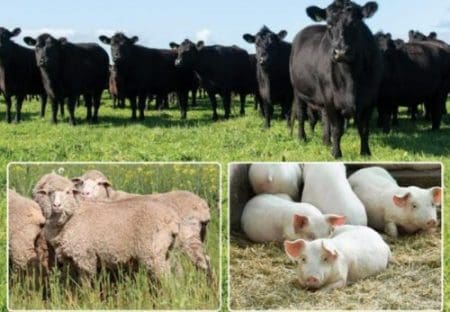VACCINATION, rather than mass culling of livestock, should be Australia’s response to Foot and Mouth Disease, according to livestock biosecurity experts.
Addressing an MLA biosecurity breakfast in Brisbane on Tuesday, the three speakers endorsed vaccination over the ‘triple D’ response – “destroy, dispose and decontamination”.
However, Animal Health Australia’s head of AUSVETPLAN Dr Peter Dagg said one exception could be a small localised outbreak.
“If we have a very localised, a very small outbreak – if that happens – then we might not use vaccine.
“Slaughter will be a component in the hot spots where the disease is actually identified on an infected premises,” he said.
“The strategy is more about movement controls because FMD is a contagious disease, so it’s all about movement controls and restricting the potential spread of the virus.”
Dr Dagg stressed the availability of vaccine for Australian livestock producers.
“We have a vaccine bank held over in the UK and they will make up vaccine and move it to Australia within seven days of us requesting it, if we have an outbreak.”
MLA’s program manager of animal wellbeing, Dr Michael Laurence said he didn’t believe culling animals would be the way to control Foot and Mouth Disease, should it come into Australia.
“Vaccine will be the first line of defence.”
Related article: Tapping into a rare COVID silver lining: Vaccines without trade barriers
Queensland Department of Agriculture & Fisheries biosecurity officer David McNab said it should be pointed out Australia will not be considered free of FMD until all the vaccinated animals are out of the system as well.
“Even if they’re vaccinated, they’ve still got to be destroyed at some point.”
He noted that, over the past seven years, policy has shifted away from culling.
“At one time we didn’t consider vaccination at all; we have changed that over the past five or six years.”
Mr McNab supported using abattoirs to turn off infected and vaccinated stock.
“That would be a hell of a lot easier than having to destroy them in the field,” he said, admitting that the prospect of mass culling “is what keeps many of us tossing and turning at night.
“How we do that on the basis of tens of thousands of head at a time?” he asked.
“We recognise one of the worst-case scenarios – let’s use one of the big feedlots, you know – 40 or 50,000 head. How do you ever get 40,000 to 50,000 rounds of ammunition out there? Honestly, it’s the thing of nightmares.
“So that’s why we changed our policy. Vaccinate that feedlot and suppress the disease and give us an opportunity to get them through to abattoirs.
Emergency exercise to test preparedness in November
Meanwhile, Australian livestock agencies will undertake a desktop emergency exercise in November to test a national response to a potential Lumpy Skin Disease (LSD) outbreak.
Dr Dagg said all players in the supply chain will be involved in the two-week-plus exercise to thoroughly test Australia’s preparedness and reveal any gaps.
“We’re still in the process of working it out but basically what we’re looking at is four different scenarios that we’re looking at, four entries into Australia,” he said.
“We’re trying to involve absolutely as many people in the whole supply chain as we can so we’re going through our primary contacts at the Australian Meat Industry Council, Cattle Australia, Australian Lot Feeders’ Association, Dairy Australia, Australian Dairy Farmers etc.
“We are trying to challenge the whole system, if we can. It will have as many government and industry people there as we can,” he said.
“It will go for two weeks at least.
There will be breakout groups and each group will be given their scenario to work on and will be given two weeks to address their scenario and at the end of that we’ll have a full exercise where we’ll bring everyone together virtually again to see what the actions were and any gaps that have been identified throughout the system,” Dr Dagg said.
Dr Dagg offered these suggestions to boost preparedness:
WHAT YOU CAN DO NOW
- Build good habits and professional standards in ‘peacetime’
- Look and report animals with suspicious signs of disease
- Secure your farm against diseases, pests and weeds – good biosecurity
- Farm inputs – feed, vehicles, people, animals
- Farm outputs – animals, product
- Ferals and weeds.




HAVE YOUR SAY